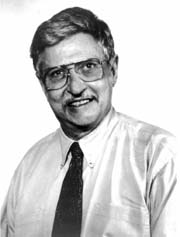For Bob Leach, the art of telling tales didn’t die with the waterfront saloons, even though 60 years later, few people can recall the sawdust trails that used to mark the passage of men from bar to bar along River Street in Hoboken, or the culture of poetry that helped many a barroom bard get through The Great Depression. Even though Leach doesn’t seem to know it, people talk about him in much the same way he talks about people in his book, Saloon Stories. This has nothing to do with gossip so much as reputation. Leach has managed to evolve into a living legend just like the people he writes about from the 1940s. He’s been stomping around the old Hudson County waterfront in the realm of his imagination, telling the tall tales of a saloon life that had been on the wane even when he first came across it as a boy during World War II. Everything he writes has an edge of exaggeration, he said in an interview last week, truth shaped into imaginary people whom he sets loose in his stories. Although the stories maybe start with firsthand experience, the act of transforming the experience into story via art turns it into something more interesting. It is truth as metaphor in which he has changed the names and blurred the situations. Saloon Stories is a collection of fiction-folklore, short stories that take place in an imaginary landscape called Hudsontown, a mingling of places throughout Hudson County, from waterfront in Hoboken to the swamps near Route 440 in Jersey City. In his stories, Leach tends to merge periods between 1910 and 1940, attempting to create layers of texture. But the visions he creates often place the saloons he saw in the 1940s in a time frame of the 1910s when horse and buggy was still the predominant mode of transportation in Hudson County. “I grew up in 1940s Jersey City when there was still sawdust on the floors of the corner saloons. Many of the neighborhoods and some swinging doors still left,” he said. But even when Leach saw the saloons, they were fading away, one bar after another closing as the waterfront changed. It was a world out of which Frank Sinatra emerged as a saloon singer and a world that enticed beatnik poets like Allen Ginsberg. “I got to see the last vestiges of the golden age of the local barroom poets,” Leach said. In the beginning … At the beginning of the century, storytelling and barroom poetry served as entertainment in saloons where juke boxes, radio and television serve today. Actors and poets built reputations on the local circuit. “A recitation meant a lot, and the great speakers emphasized elocution,” Leach said. “On a local level, many of these people were the rock stars of their time. In the old time bars, they had great power of speech and poetry.” Many of the poems such as “Casey at Bat” became popular stuff of barrooms. Many men recited poems they had learned in school. Since then, the concept of the saloon changed – according to historians – partly because of Prohibition. Well-meaning reformers of the late 1800s managed by accident to transform the barroom tradition of social gathering places (typical of England and Ireland where song and poetry were common fare) into a something sleazy. By the time Prohibition had been lifted, barrooms remained under a questionable cloud of moral ambiguity that took years for them to escape. “Society has changed,” Leach said. “People used to look at the saloon as a social place, where people in the neighborhood gathered. Men went there after work. It was often the only outlet they had.” The saloon, he said, was a fixture on the waterfront in Hudson County for more than 75 years. Although the heyday of the saloon poet had ended pretty much with the beginning of the Depression, many of the barroom bards managed to earn a living as a kind of panhandler. “I saw some of them in the 1940s,” Leach said. “But by that time, they had lost much of their great power.” Leach, 62, keeps the memory of that time alive with tours of Jersey City schools, telling old poetry and the tales from a time most people have forgotten or never knew. He tells the stories about Irish Culture, about what life was like in Jersey City when the area around Route 440 was still a swamp, a place bordering Kearny where the hobos used to live. “I’m trying to capture a way of life and make it real,” he said. “These are true stories, but sometimes the best way express the truth is through a tall tale.” In Saloon Stories, Leach has collected some of these tales, stories about the storytellers of the past, verbal snapshots of the people who made up a remarkably colorful era. Characters like Rosie O’Grady, the Tattooed Lady, and The Great Houlihan are the fictional representations of people who once made saloon life magical. The book suffers a little – the way Homer’s Odyssey did – because oral tales in print have a tendency to become repetitious, not typical of stories designed for print. But these are stories of an oral tradition, something Leach has honed as a skill over the years of traveling Hudson County. The book was funded through the Jersey City Library and all proceeds go towards supporting the library’s programs. For those who wish to hear them first and then read them later, Leach will be appearing at the Hoboken Barnes and Nobel today (Thursday, March 16) at 7:30 p.m.
Following the sawdust trail: Storyteller recounts tales of saloon era in Hoboken
